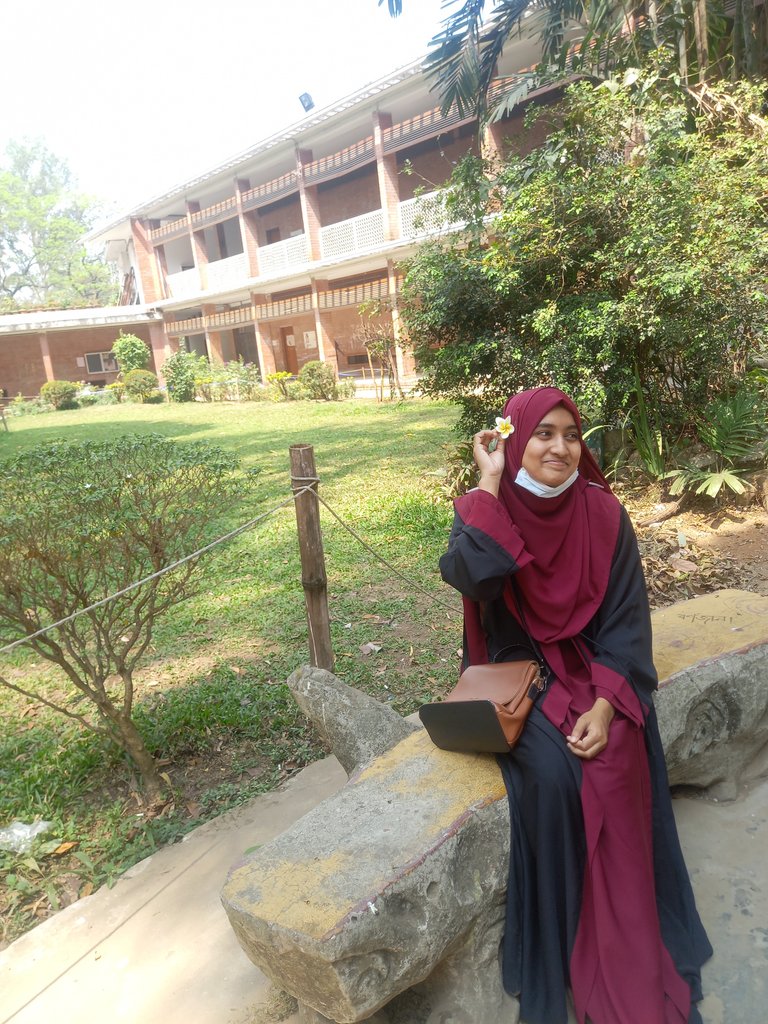Hello of my Hiveian Friend!
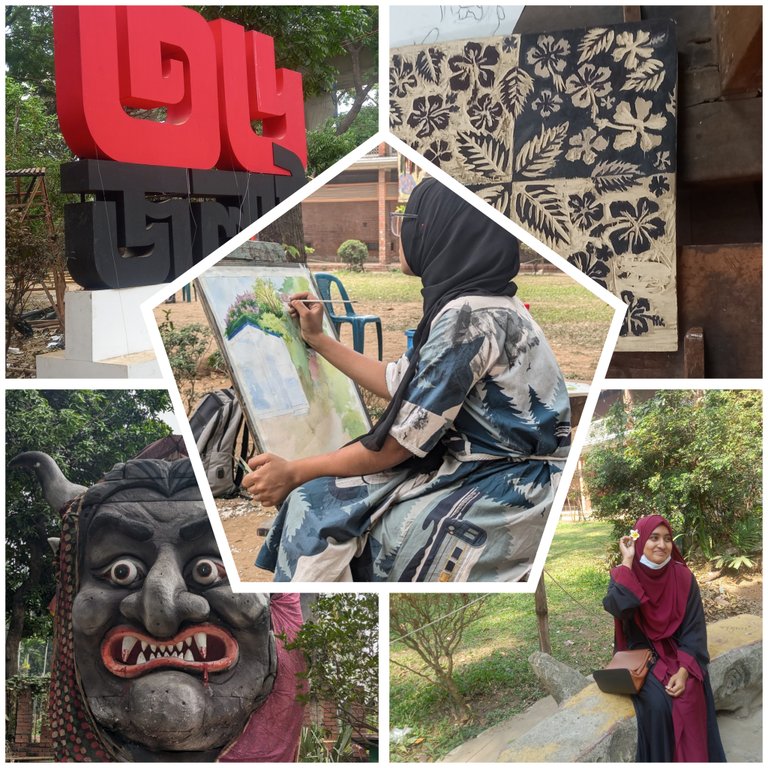
Have you guessed anything from my title? Yes, I was saying the explosion of colors. Where colors, ink, sculpture and the artist's touch of creativity. That's exactly what I saw, at the Faculty of Fine Arts of Dhaka University, the famous Oxford of the East in Bangladesh. Which is the place of passion of many artists.
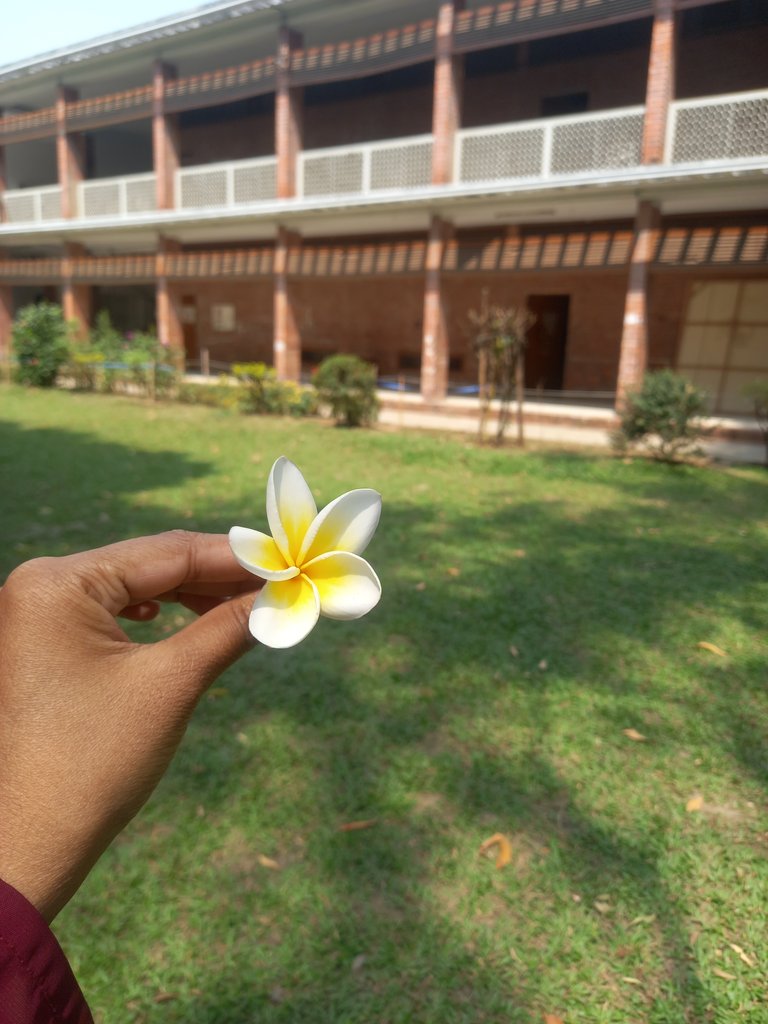
Last week, our English class lecturer was taking his class as usual. Suddenly, he decided to take a presentation from us as a co-curricular activity. We students were also very excited about the presentation. So, sir, he divided us into several groups for the presentation. He gave each group a different topic for the presentation. For example, the Faculty of Fine Arts, the Art Building and Sculpture. So, the subject of our group was the faculty of fine arts or the Faculty of Fine Arts. We were very happy to get this topic and started working on our presentation very quickly. For the presentation, my other group members and I went to the Faculty of Fine Arts. Which was very close to our department. We all walked in front of TSC Raju Sculpture and reached the Faculty of Fine Arts within 10 minutes as usual.
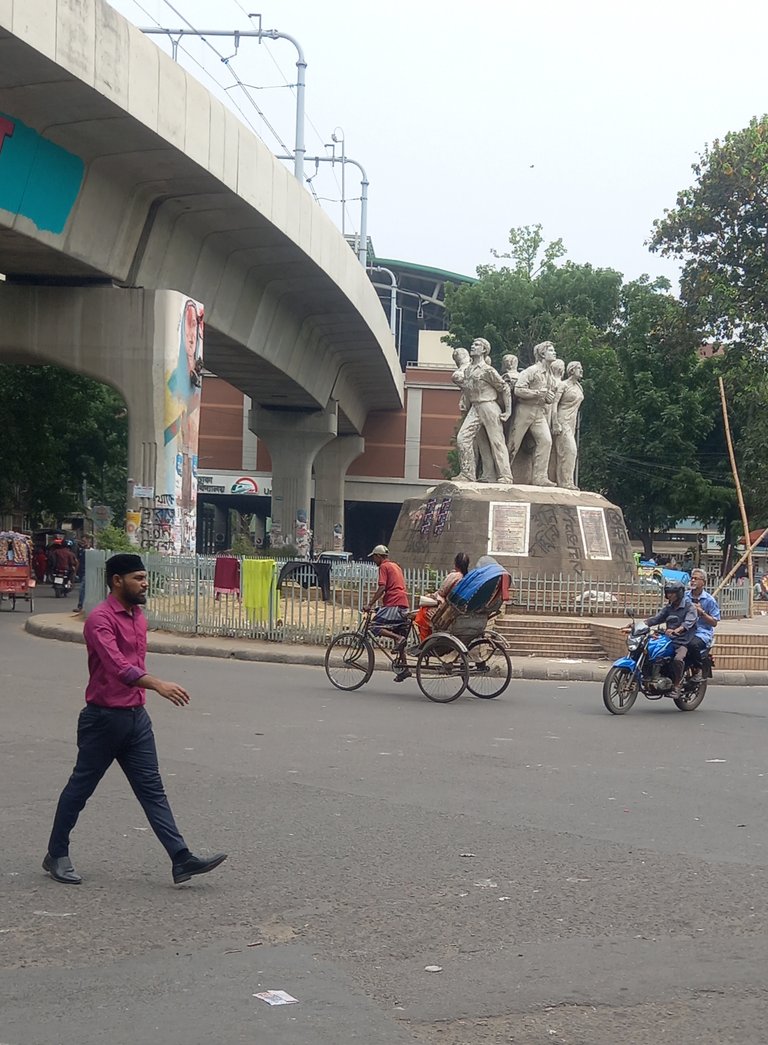
The journey of the Faculty of Fine Arts began in 1948. It is a renowned place for studying arts and crafts in Bangladesh. Earlier, its name was "Government Art Institute". But later in 1983, it was renamed as "Institute of Fine Arts" under the University of Dhaka. It is located in Shahbagh, Dhaka. There are about eight departments here. Such as Department of Drawing and Painting, Department of Printmaking, Department of Sculpture, Department of Crafts, Department of Graphics Design, Department of Oriental Arts, Department of Pottery, Department of History of Art. The journey of the Department of Fine Arts in Bangladesh was originally started by Shilpacharya Zainul Abedin.

Our group members were four. We all entered the Faculty of Fine Arts through the Shilpacharya Zainul Bhaban. There was a staircase there, next to it was a rosewood tree. I saw a large field there. In the middle of the field were many tree sculptures. There was a big litchi tree. One of my group members was named Kashfia. He was mistakenly calling the litchi tree a banyan tree or a mango tree from a distance. Which was really funny😄😄. Also, there were two different sculptures. One sculpture looked like five people discussing a topic. One was of three children. One of them was standing, one was sitting, and one had his hands on his head.


 | 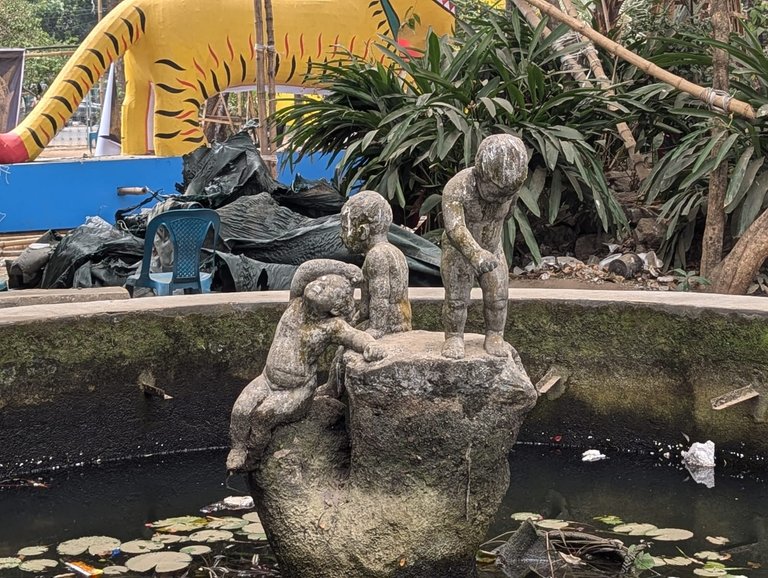 |
|---|
Then, a little further ahead, I saw some portraits placed in the middle of the field. Which may have been made for this year's Mangal Shobhajatra. Mangal Shobhajatra is basically a part of the Bengali New Year. It was celebrated as a secular festival in the second century of the twentieth century. It basically emerged as the universal culture of Bangladesh. On November 30, 2016, UNESCO recognized the Mangal Shobhajatra as an intangible or intangible heritage of humanity. Every year, different masks are created in the Mangal Shobhajatra. This time, a few portraits in the Mangal Shobhajatra attracted attention. Among them are July 36, the national fish of Bangladesh, Hilsa, and a caricature of fascist former Prime Minister Sheikh Hasina. Also, the most interesting portrait was the "Pani Lagbe Pani" portrait of Mir Mughda, who was martyred in the 2024 anti-discrimination student movement. Which was really very beautiful.
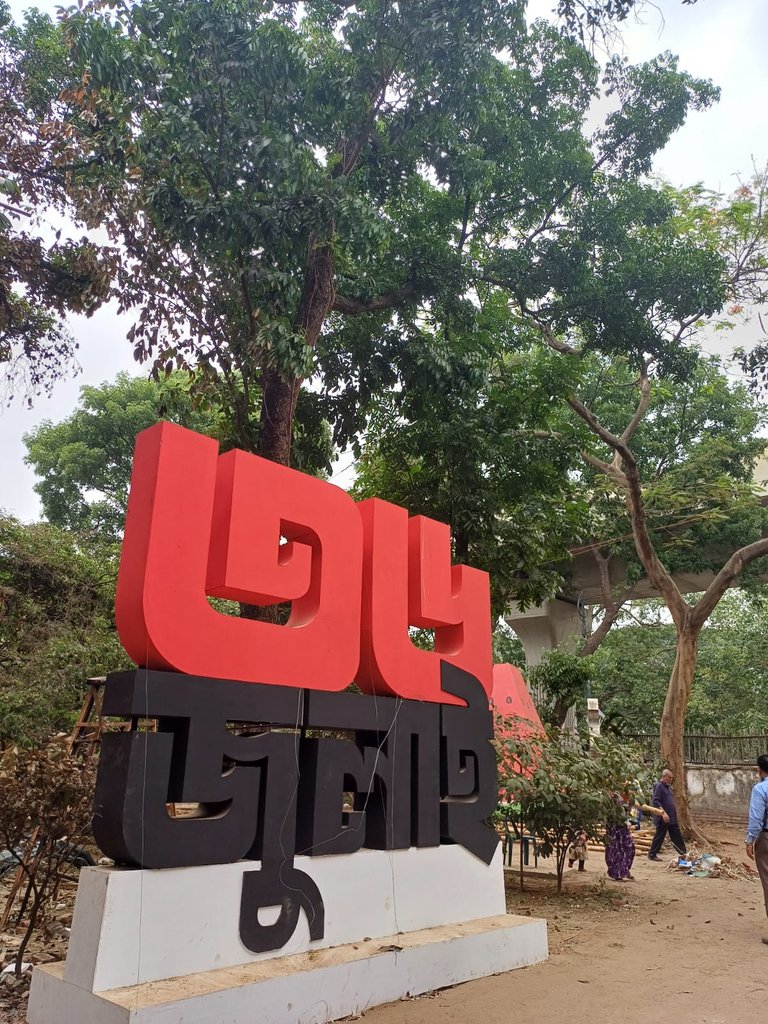

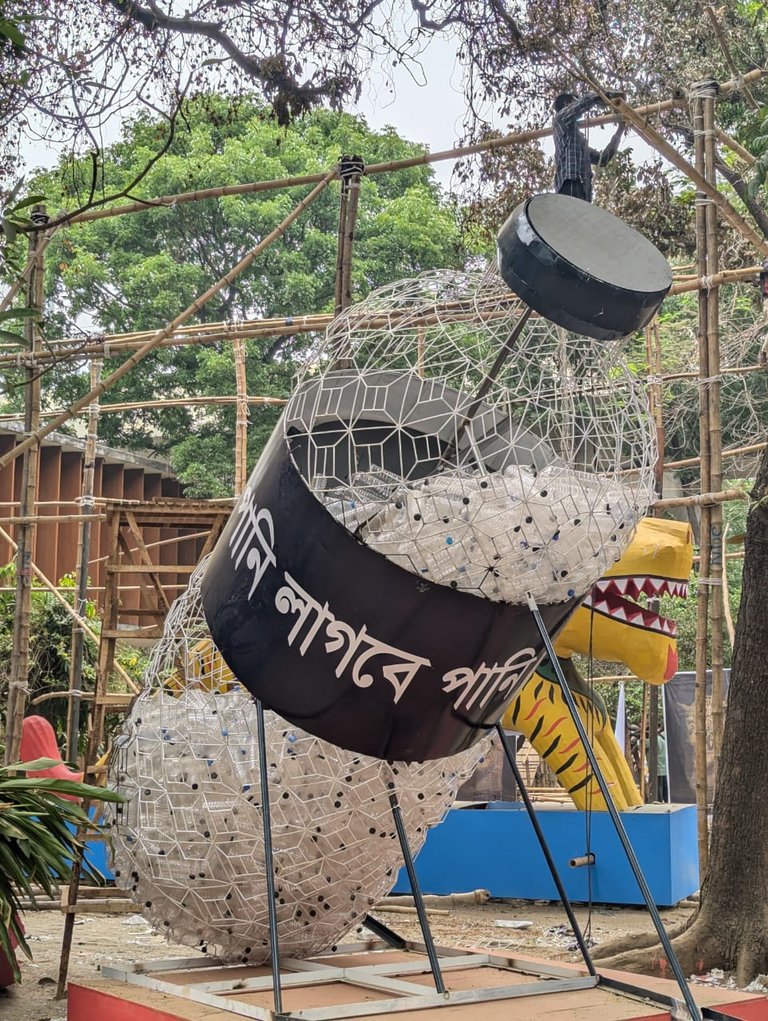
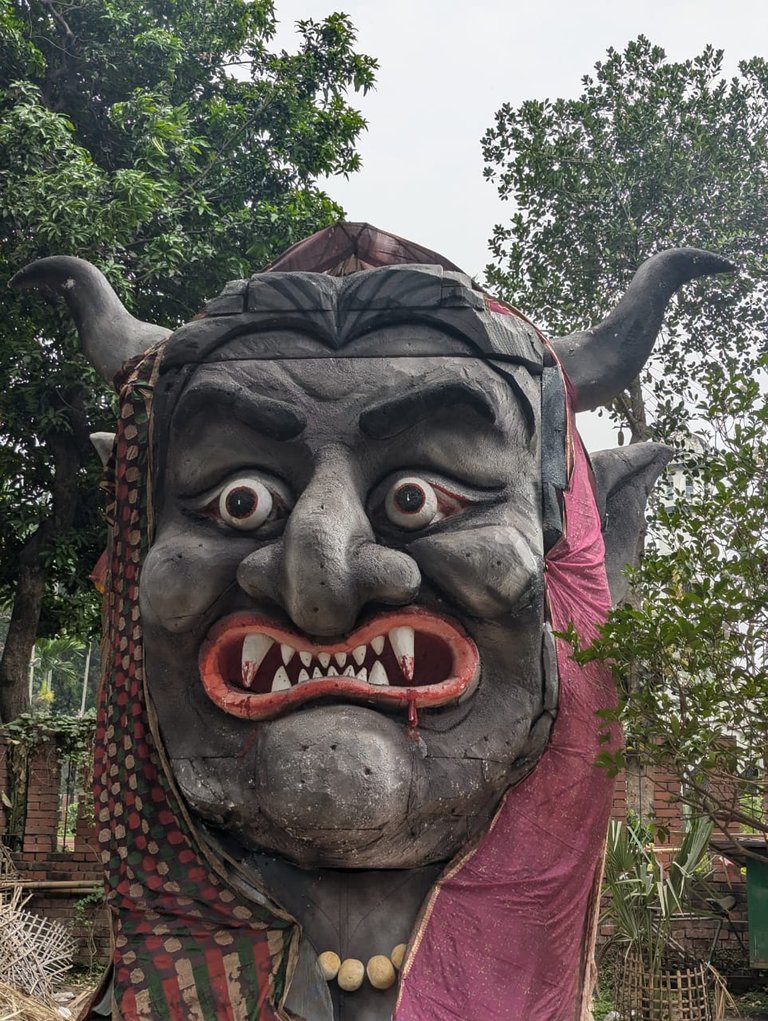
There were also some unique crafts. Which were originally made on long cloth. Notable among these are Patachitra Bangladesh, Patachitra Ban Bibi.
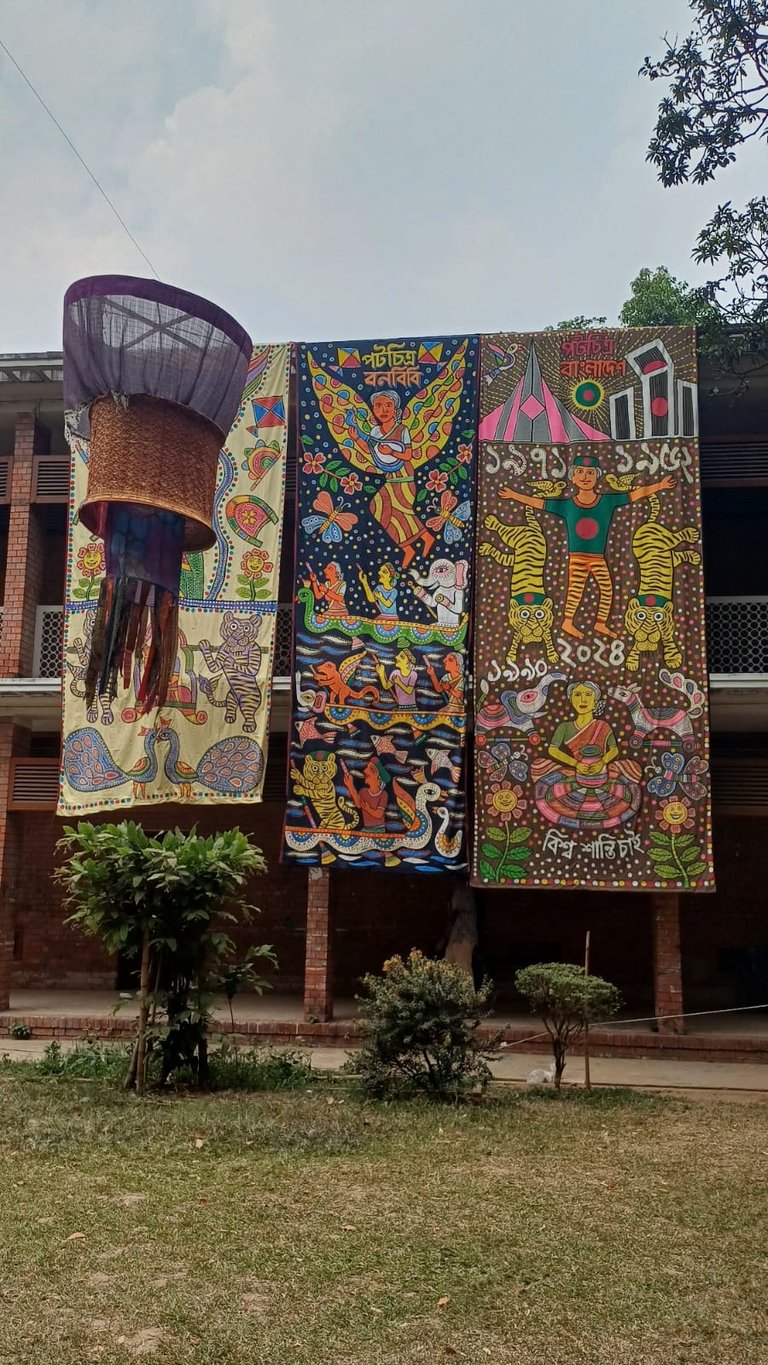
Also, I saw some wall paintings, which were really beautiful. They were made with white paint on yellow walls or touches of blue on white walls.
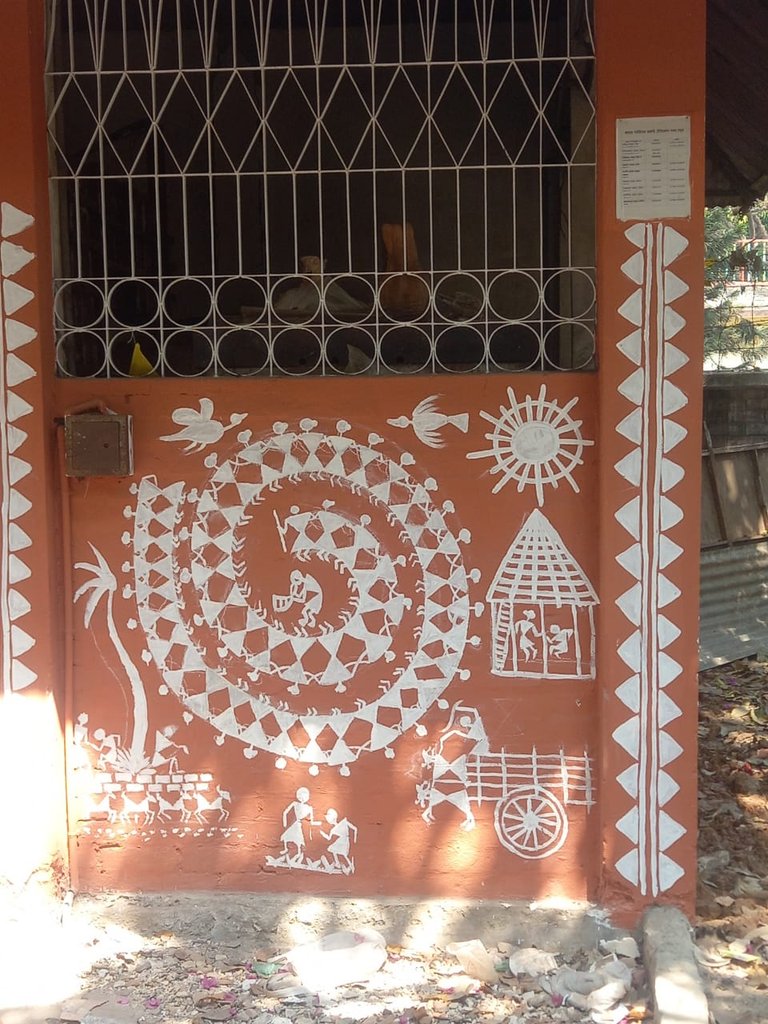

There were also some different types of sculptures, notably Zainul Abedin, some strange sculptures including a half-man on top of clay. I was very surprised to see them.
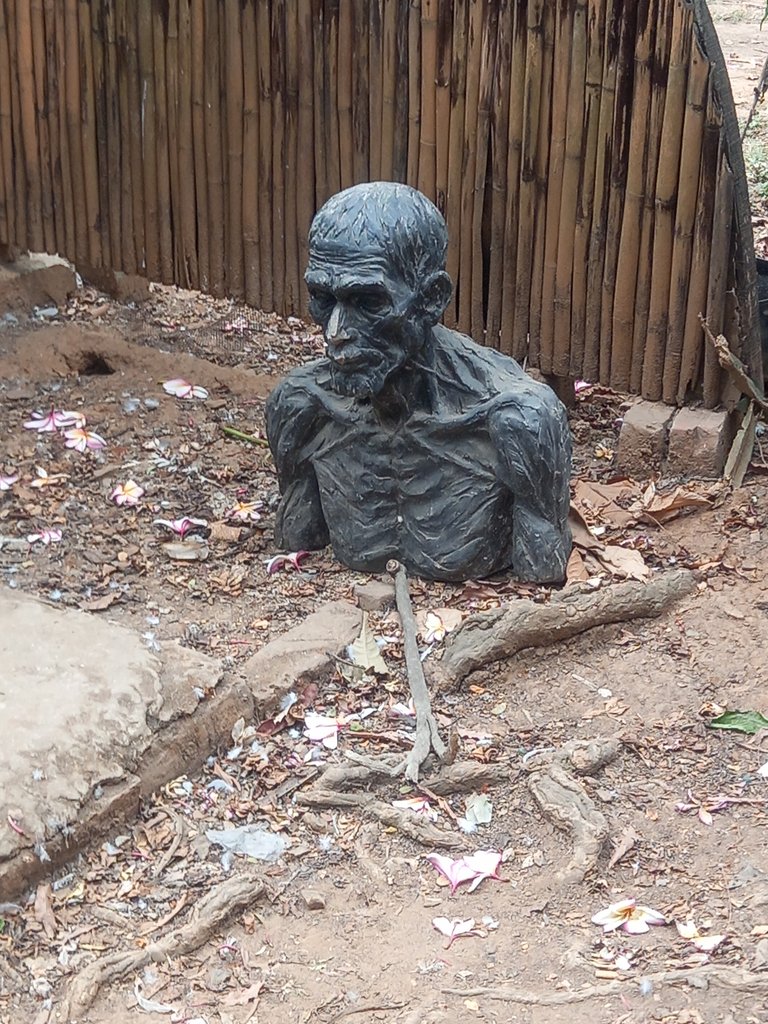
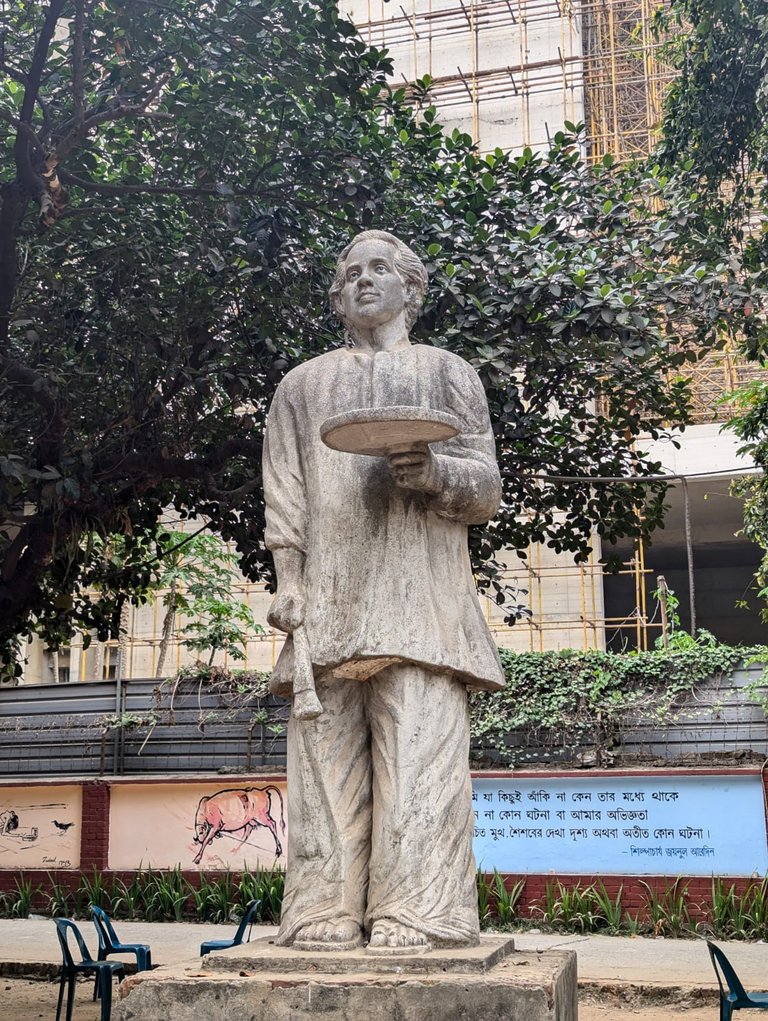
Each painting created by the teachers and students of the Faculty of Fine Arts carries a different meaning. When you look at each painting, it seems that it was created with great care. Each one reveals a different creativity. Which is really admirable. It seems that they have a silent competition with nature. They paint nature with great care.
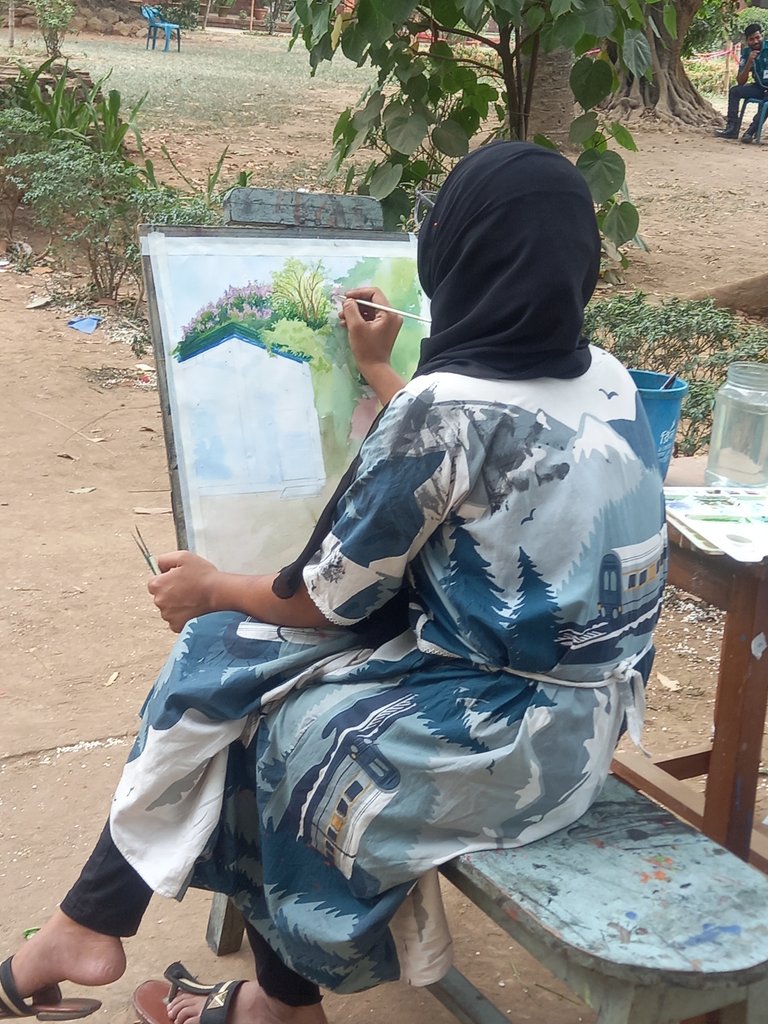
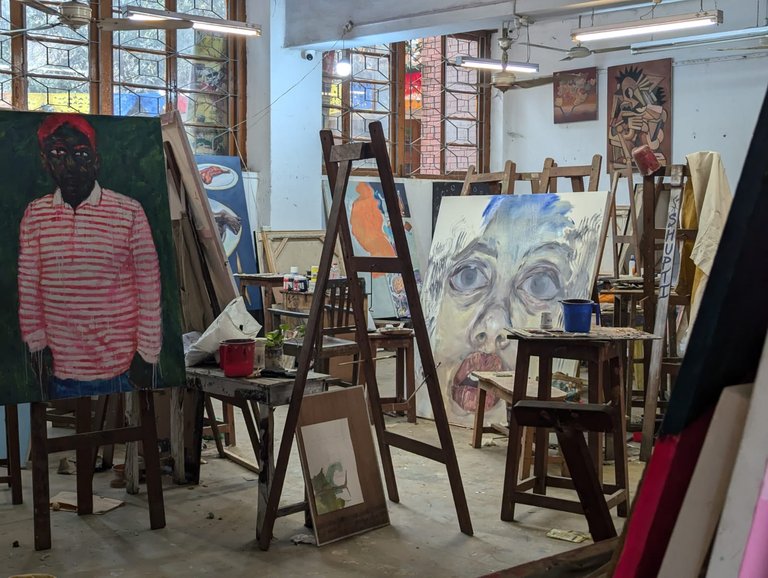
Students sometimes use wooden molds to draw pictures. They also use different sizes of canvas, different types of colors such as watercolor, acrylic colors, and different sizes of pencils. This allows them to express their creativity easily. I liked Zainul Abedin's pictures of human skeletons caught in the grip of famine the most. Which he created only with charcoal and white paper. He painted his pictures with great compassion. Later, those films received much praise worldwide. In addition, there is a collection of many other paintings in the Faculty of Fine Arts.
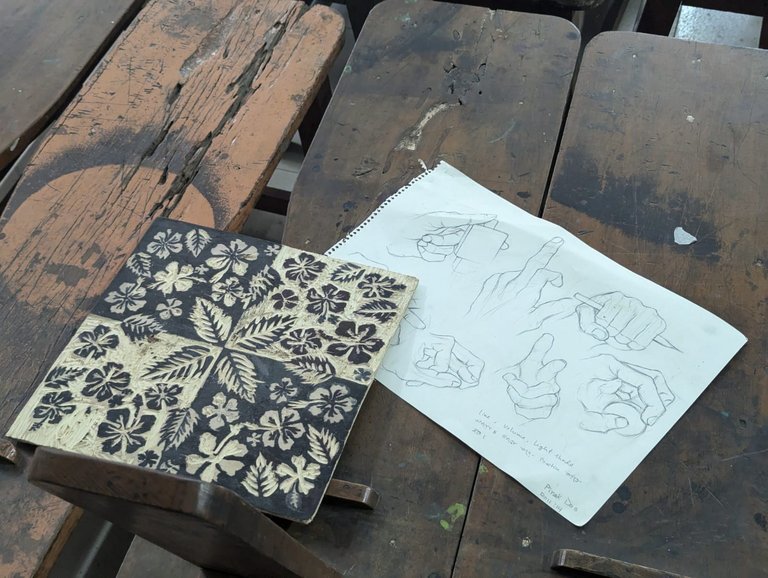
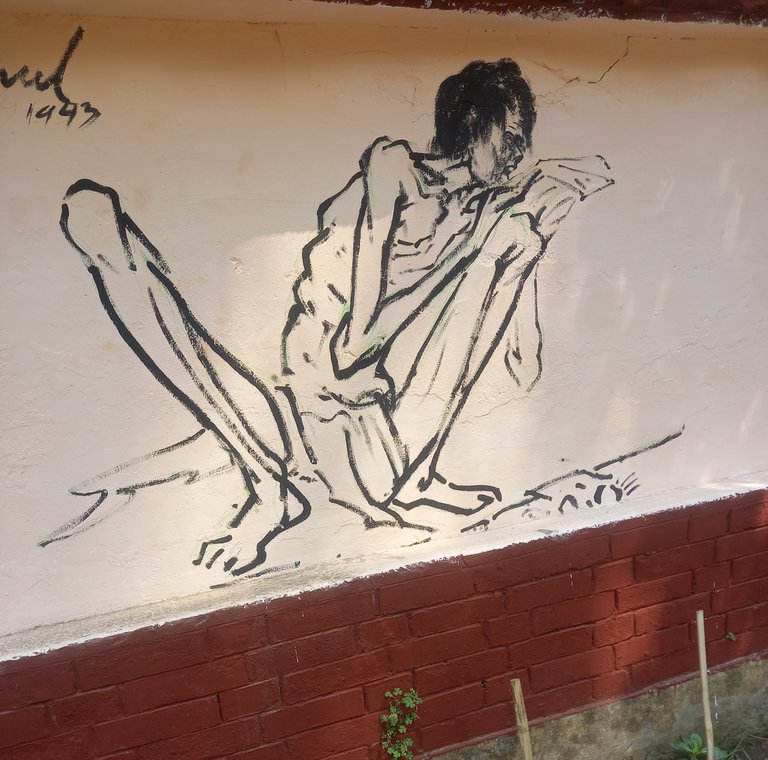
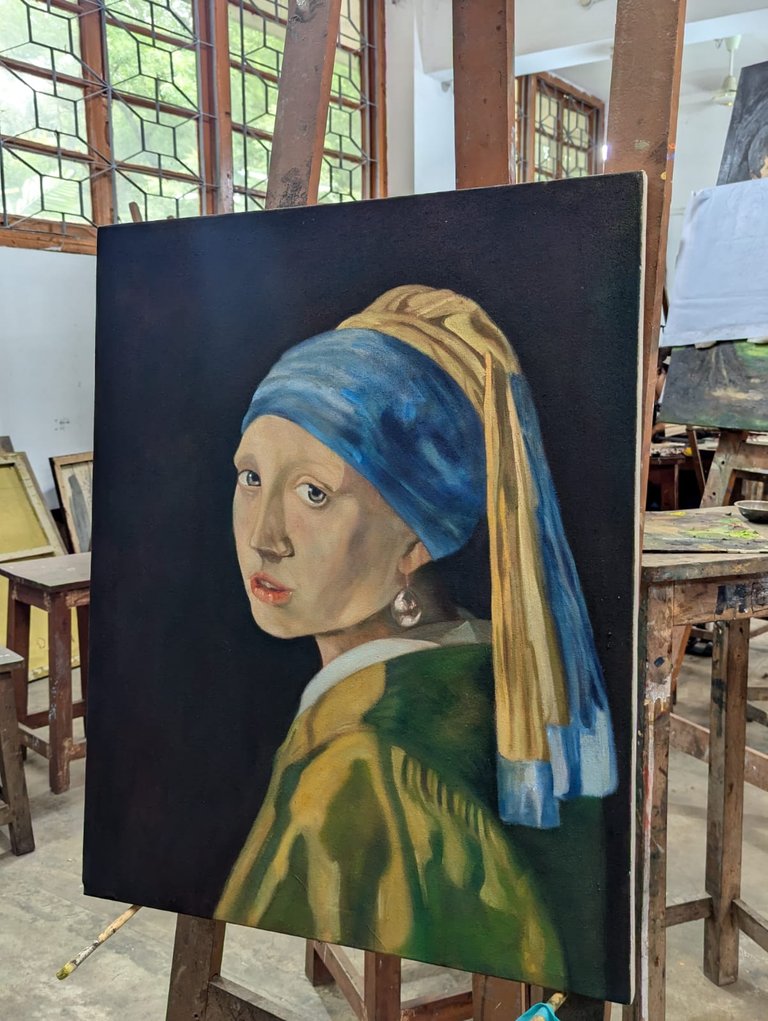
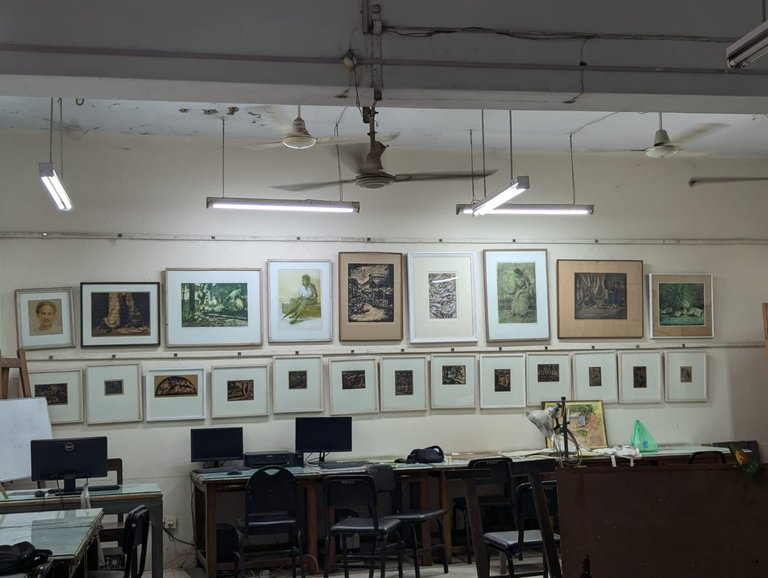
On the occasion of the New Year, the Faculty of Fine Arts was being decorated very beautifully. As if it was coming in a new form, the Faculty of Fine Arts is really very beautiful, many foreign tourists come to see its beauty. The green plants around, colorful flowers, the creativity of the artist, the smell of paint brushes really fascinate anyone.
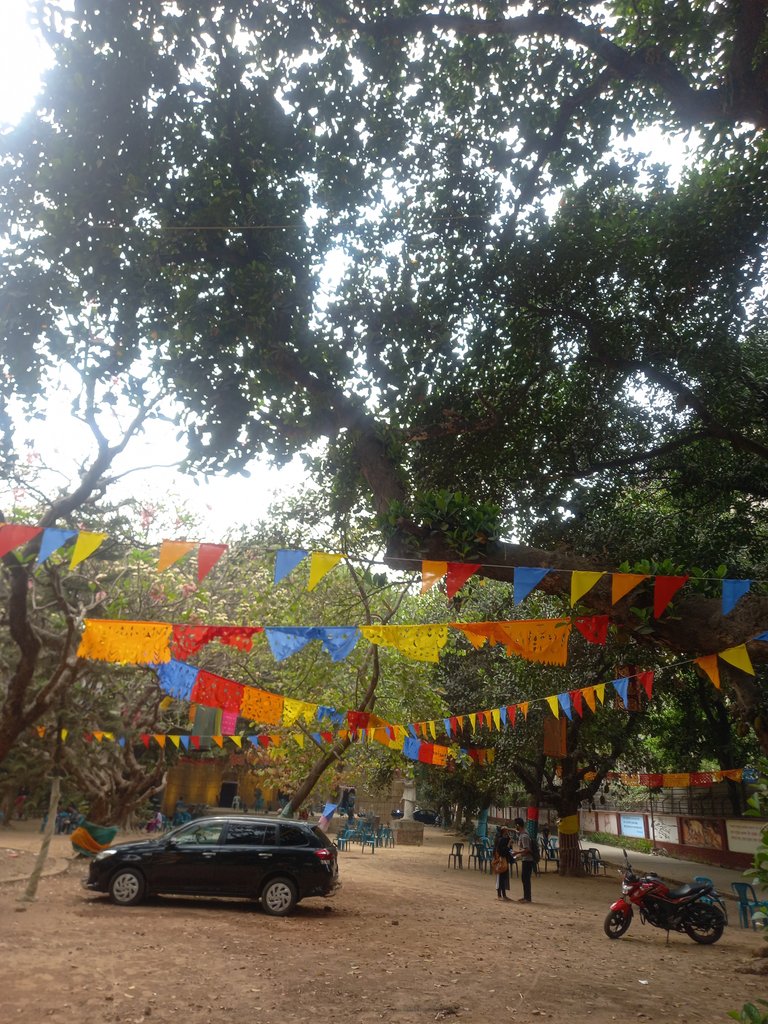
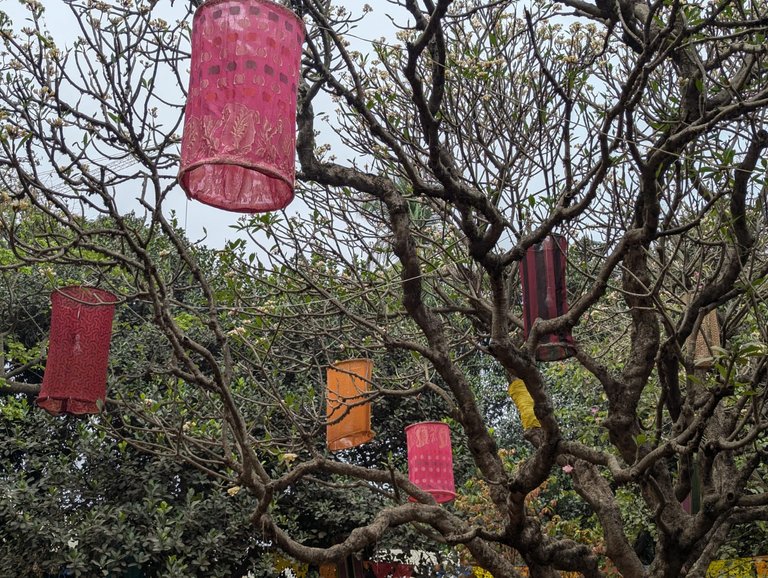
Then I took a few group photos with my group members. Which were really funny. I will never forget the time we had so much fun together. That day, for the first time, I felt that university life is not just limited to studies. There is so much to learn here beyond the textbooks. The struggle to survive in life may start from here......
